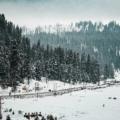Winterline in Mussoorie & Nainital | Best Time, Viewpoints & Stays

In this Blog
What is the Winterline?
The Winterline also spelled “Winter Line” is a rare atmospheric phenomenon visible at dusk in select mountain regions. Many travellers first encounter it while searching what is winterline or trying to understand the winterline meaning, especially because this visual spectacle is so unusual. It takes the form of a distinct horizontal band – a “false horizon” – that appears above the real horizon just as the sun sets, colouring the sky with dramatic hues of red, orange, mauve and grey.
This effect is caused when dust, moisture and tiny particles rising from the plains get trapped by colder mountain air during temperature inversion. As sunlight refracts through these atmospheric layers, it creates striking bands of light and shadow – the Winterline. This rare horizon illusion is part of the winterline phenomenon, which continues to attract scientists, photographers and travellers alike.
Globally, it is rare: in India, it is most famously visible from Mussoorie, where the winterline in Mussoorie draws crowds every year. In recent years, Nainital in the Kumaon hills has also emerged as a strong candidate for Winterline watchers.
This blog explores everything you need to know about the Winterline phenomenon, its visibility in Mussoorie and Nainital, best viewpoints, ideal time, travel tips, and StayVista villas perfect for a Winterline getaway. Many travellers also visit to understand the deeper winterline meaning through real-life experience rather than textbook explanations.
When & Where to See the Winterline
Best Time
- Peak season: Late October through February.
- Ideal conditions: Clear, crisp winter evenings with minimal haze or clouds. Cold mountain air combined with dry plains (after monsoon) improves visibility. Because the winterline phenomenon forms through a delicate combination of temperature inversion and trapped atmospheric particles, these clear winter conditions offer the best results.
- Best moment: Arrive about 20–30 minutes before sunset – the band appears shortly before the sun dips below the horizon and lasts only a few minutes.
Where to See the Winterline in Mussoorie

Mussoorie has historically been the most reliable Winterline destination in India. Many travellers specifically visit to witness the winterline in Mussoorie, and over time the town has earned global recognition for its vivid displays. The steep valley drop toward the plains allows dust and moisture particles from the Doon basin to rise and settle into atmospheric layers — the perfect recipe for Winterline formation. Locals often say that winterline Mussoorie is the most dramatic version of the phenomenon in the entire region.
Below is an expanded guide to the most scenic Winterline viewpoints in Mussoorie:
1. Lal Tibba
The highest point in Mussoorie, Lal Tibba offers a sweeping, unobstructed vantage toward both the Himalayan range and the Doon Valley.
Why it’s ideal for Winterline watching:
- Its elevation ensures minimal construction or forest cover blocking the horizon
- The altitude allows a more pronounced and wider Winterline band
- Sunset colours spread across the Doon Valley upward into the sky, creating a dramatic layered effect
Visitors often gather here with telescopes and cameras as the band forms right above the real horizon. The viewing deck and cafés make it an accessible and pleasant experience for observing the winterline phenomenon in its clearest form.
2. George Everest Peak
George Everest Peak (near George Everest House) offers a tranquil alternative to the usual crowded viewpoints.
Known for:
- Expansive sky views
- Far-stretching sightlines over the plains
- Quiet surroundings
The Winterline here appears as a bold, thick band since the plains below stretch uninterrupted for kilometres. Photographers love this spot for wide-angle shots, sunset timelapses, and silhouette captures.
3. Cloud’s End
One of the most serene ends of Mussoorie, Cloud’s End is a dream location for Winterline spectators.
What makes it special:
- Dense oak and deodar forests enhance the contrast of the glowing sky
- Elevated cliffside trails allow more dramatic angles
- The Winterline here often reflects on the layered clouds, adding depth
It’s quieter, more immersive, and the perfect viewpoint for travellers who enjoy natural landscapes without crowds.
4. Camel’s Back Road
A favourite among walkers, Camel’s Back Road is ideal for spotting the Winterline while taking an easy stroll.
Features:
- Clear valley-facing views
- Accessible from Mall Road
- Several points along the 3-km stretch offer excellent vantage angles
Around sunset, the sky shifts from soft gold to deep orange, and then the Winterline emerges sharply as the light dips behind the Doon Valley.
5. Gun Hill & Mall Road
While more crowded, these central vantage points often surprise viewers with some of the brightest Winterline formations.
Why they work:
- Open west-facing slopes
- Easy to reach
- You can catch the Winterline while exploring Mussoorie’s main attractions
Gun Hill, reached by ropeway, offers a classic, panoramic view of the entire valley – exactly where the Winterline tends to appear most prominently.
Where to See the Winterline in Nainital

Though Mussoorie is the Winterline pioneer in India, Nainital has emerged as a new hotspot for the phenomenon. Reports confirm increasingly vivid Winterline sightings across Nainital, drawing crowds to higher ridges during evening hours. The winterline phenomenon here looks slightly different from Mussoorie’s version, appearing softer and more pastel-toned on many evenings.
Here is an expanded look at the best Winterline viewpoints in Nainital:
1. Naina Peak (China Peak)
At 2,615 meters, Naina Peak is the highest point in Nainital — and naturally, one of the finest Winterline vantage points.
Expect:
- Uninterrupted panoramic views of the Kumaon Himalayas
- A vast skyline stretching toward the foothills and plains
- A sharp, high-contrast Winterline band on clear evenings
Trekkers often hike up during late afternoons, stay for sunset, and witness the sky transforming into layered shades of tangerine and rose.
2. Tiffin Top (Dorothy’s Seat)
Tiffin Top is a beloved sunrise and sunset viewpoint, but it’s quickly becoming known for the Winterline too.
Why it’s excellent for Winterline viewing:
- Broad valley-facing ridge
- Views toward Ayarpatta Hills and plains beyond
- The elevated ledge gives a perfect low-angle horizon shot
The Winterline here appears more pastel-toned early in the season, becoming deeper in colour from mid-December onward.
3. Snow View Point
Accessible via cable car or road, Snow View is one of the most photographed hills of Nainital.
Advantages for Winterline spotters:
- Crisp winter clarity (especially December–January)
- Long horizontal skyline ideal for capturing the phenomenon
- Sunset reflections over the snow-capped Himalayas enhance the colours
Many travellers report that Snow View offers one of the longest-lasting Winterline bands due to its wind patterns and open ridge.
4. Hanumangarh
A spiritual hilltop that doubles as a spectacular sunset viewpoint, Hanumangarh offers wide-angle views toward the plains — exactly where the Winterline forms.
Reasons to choose it:
- Elevated temple complex ensures unobstructed visibility
- The horizon line drops sharply, creating the perfect inversion layer
- Lesser crowds compared to peaks like Tiffin Top
The Winterline here often forms in thick, distinct layers of orange and mauve.
5. Khurpatal & Surrounding Ridges
Khurpatal lies slightly below Nainital but provides some of the clearest horizon views.
Great for:
- Serene, crowd-free Winterline viewing
- Photographers seeking long-exposure shots
- Capturing reflections of coloured skies on the lake below
This is an excellent alternative for travellers staying in quieter regions around Nainital.
Planning a Winterline Getaway: Tips for Travellers
- Check the weather forecast: Clear skies, lack of rain or clouds – that’s key.
- Arrive early to vantage points: Getting there 30 minutes before sunset increases your chance of catching the phenomenon fully.
- Dress warm: Evenings in the hills turn chilly fast – a jacket or sweater helps.
- Carry a camera or a smartphone with good low-light capabilities: This is a sight worth capturing.
- Combine with local sightseeing: Doon Valley from Mussoorie, Naini Lake in Nainital – mix natural wonder with local culture.
- Mind eco-sensitivity: Avoid littering or disturbing local trails. As popularity increases, responsible tourism matters.
Because the winterline phenomenon has become a major draw for winter travellers, expect more visitors at popular peaks during peak months.
Where to Stay: Villas Ideal for a Winterline Trip
If you’re planning a trip to catch the Winterline and want a comfortable, stylish stay, here are four StayVista villas that make great bases.
1. Kaudia Estate – Near Mussoorie (Kanatal)
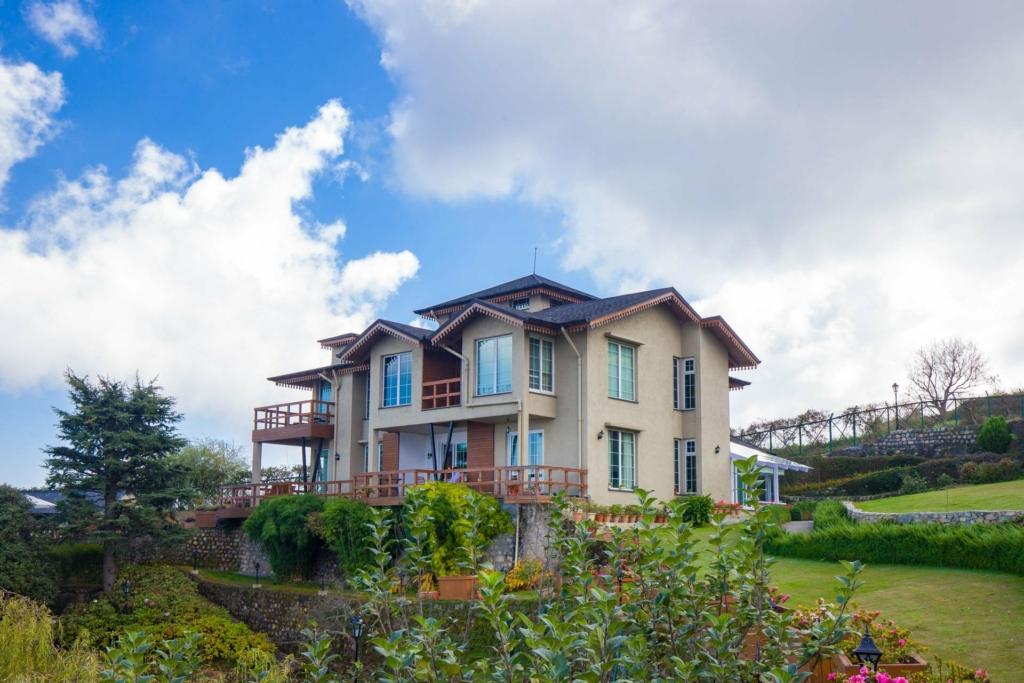

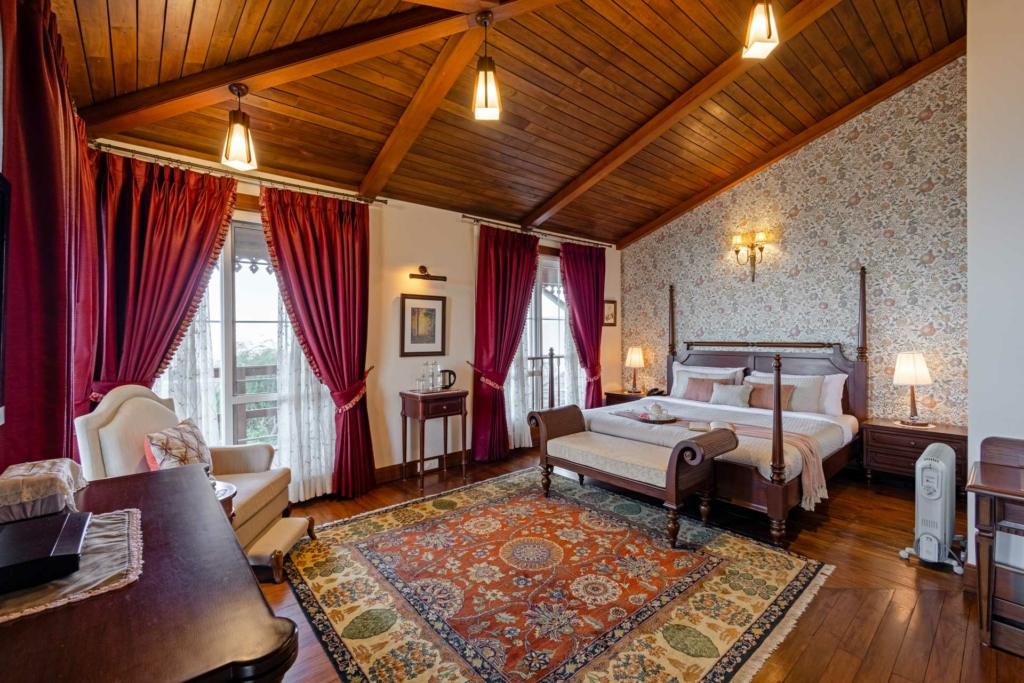
A luxurious, forest-surrounded estate with sweeping Himalayan views, Kaudia Estate blends privacy, sophistication, and natural beauty. Its elevation and clean air make it an ideal base for sunset drives to Mussoorie’s Winterline points.
2. Slice of Heaven – Mussoorie

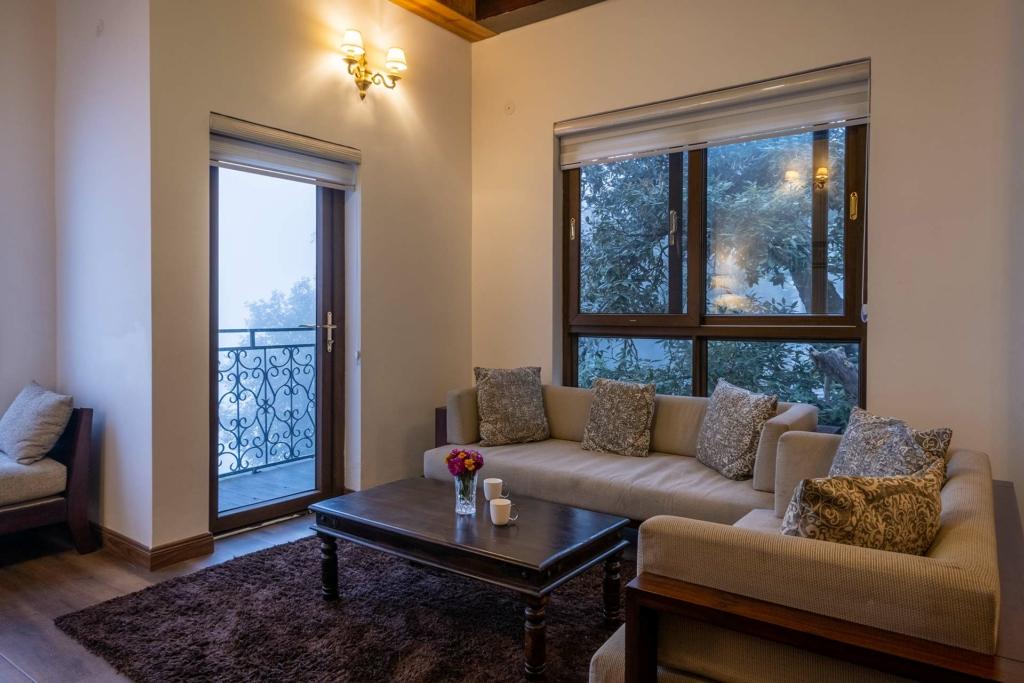

A charming Mussoorie villa with warm interiors, valley views, and easy access to Mall Road, Camel’s Back Road, and Gun Hill. Perfect for travellers who want comfort without being far from the main Winterline hotspots.
3. Jilmora Heights – Near Nainital

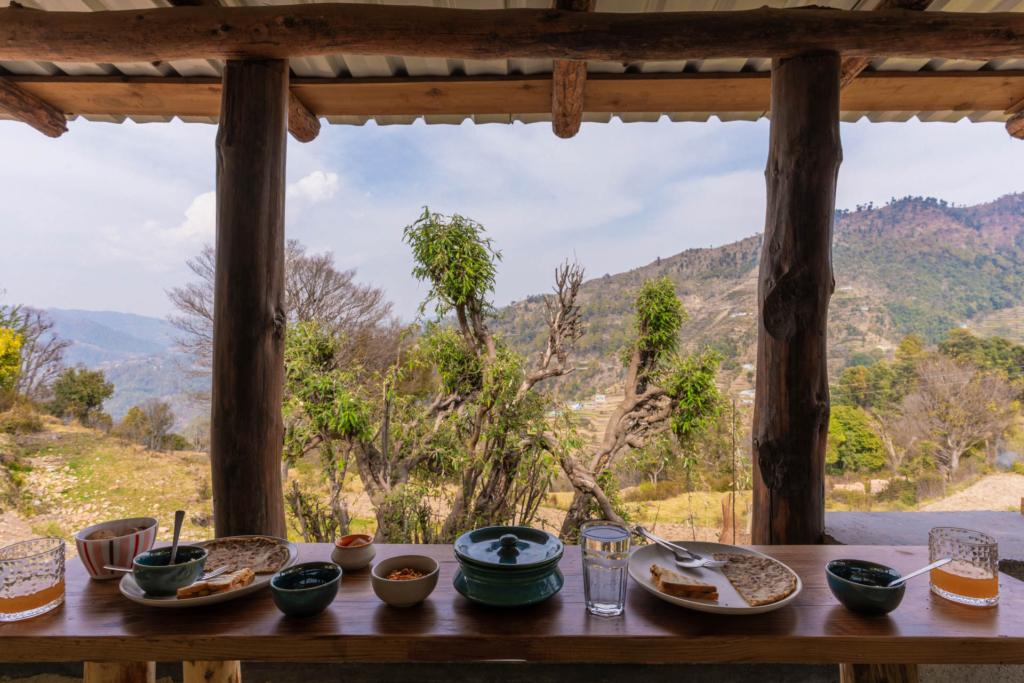
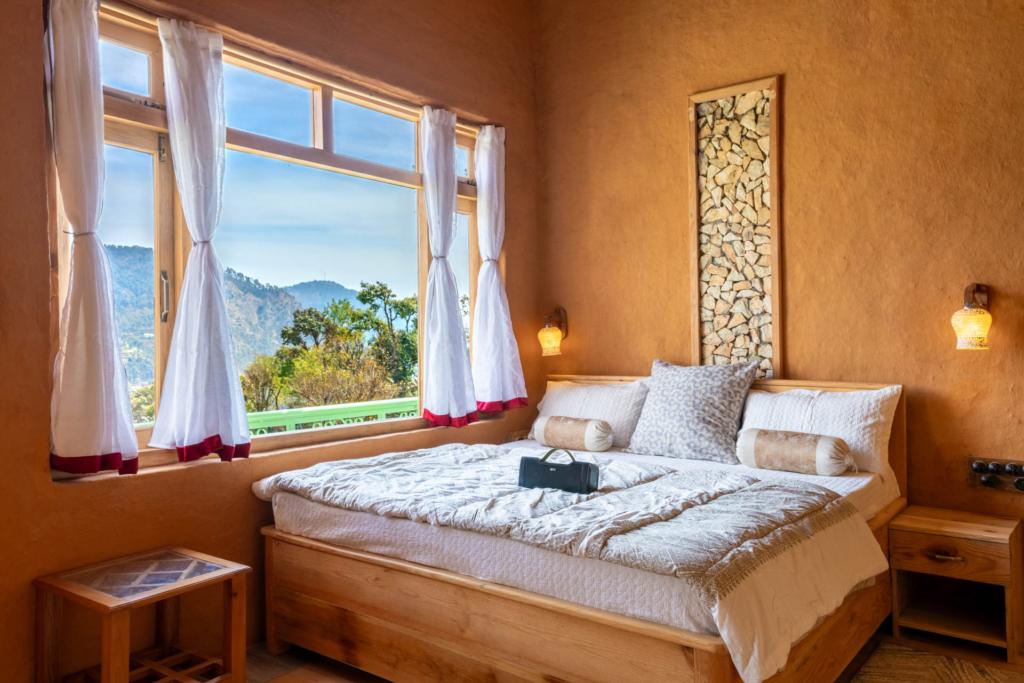
Set among dense greenery and wooden architecture, Jilmora Heights offers a mountain retreat experience close to Naina Peak, Snow View, and Tiffin Top – making Winterline viewing effortless.
4. Villa Clouds Haven – Uttarakhand Hills

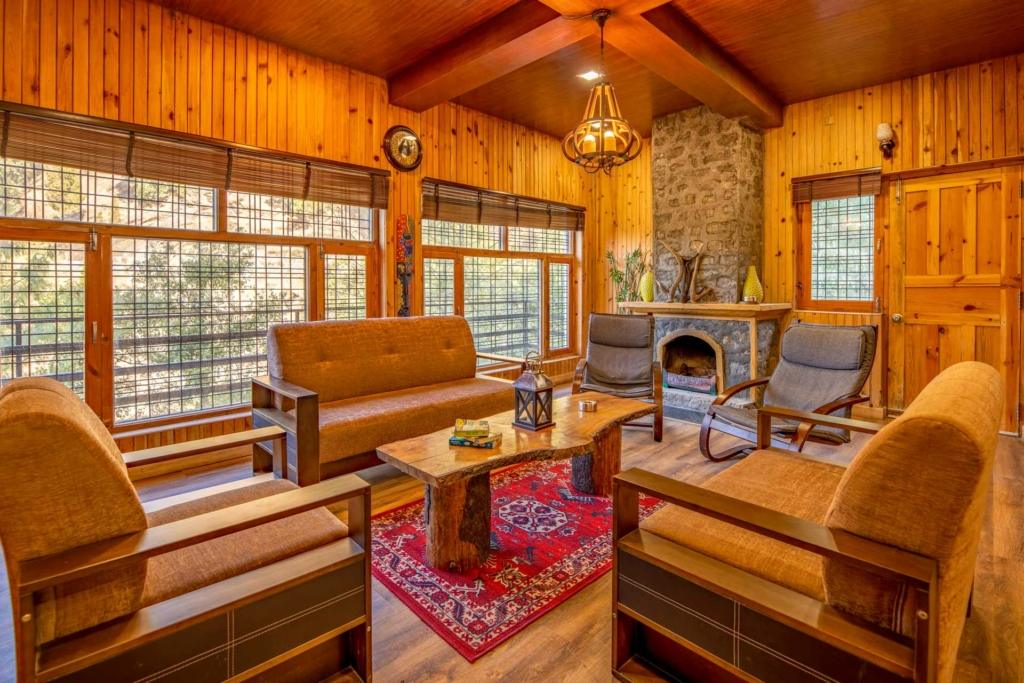
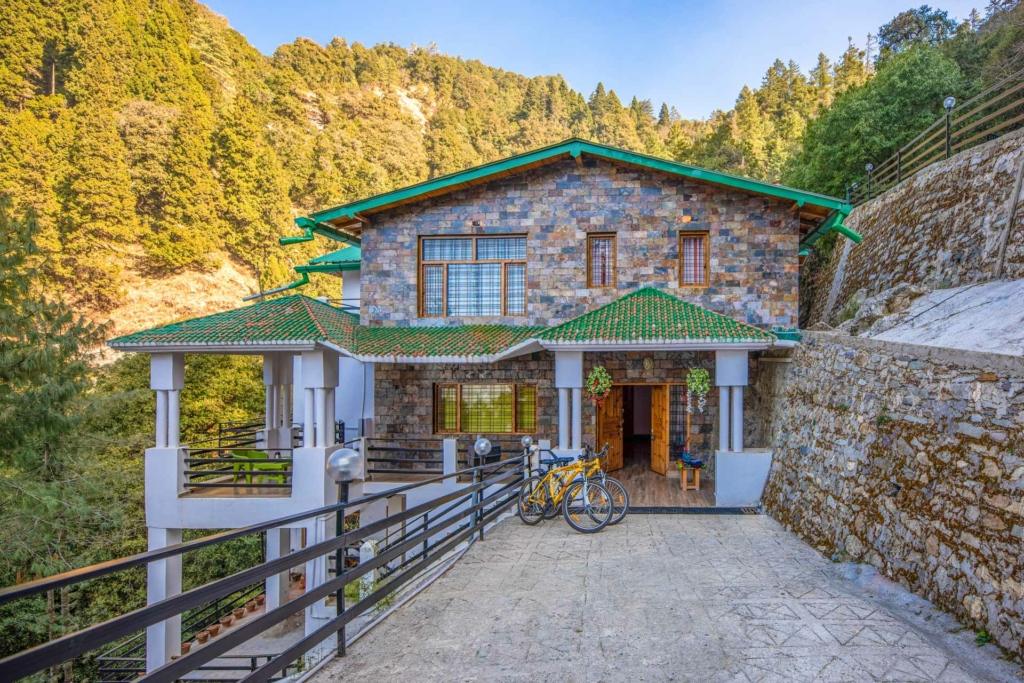
A scenic, rustic hillside villa ideal for winter stays. Its open views and peaceful surroundings provide excellent conditions for sunset watching and quick access to Nainital’s best Winterline viewpoints.
Why Winterline Deserves a Spot on Your Bucket List
The Winterline isn’t a typical mountain sunset. It’s a rare, almost surreal spectacle – a second horizon, a band of colour dancing above hills, a moment when the mountains, air and light converge to create an otherworldly evening sky. This is why so many travellers search for the winterline meaning and end up being mesmerised once they experience it in person.
Visiting Mussoorie or Nainital between October and February, staying at a well-chosen villa, and witnessing the Winterline on a crisp winter evening – this combination isn’t just travel; it’s a nature experience that stays with you. The winterline phenomenon turns an ordinary sunset into something extraordinary, and destinations like Mussoorie and Nainital offer some of the best natural theatres for it.
Banner Image Credit: Paul Hamilton via Wikimedia Commons




